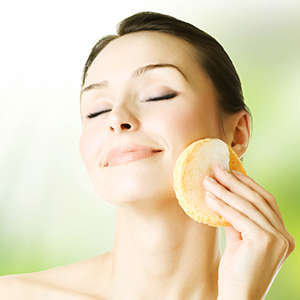Moving away from a niche positioning, “clean” and “green” beauty products become mainstream amid lifestyle changes towards wellness and overall health, recording nearly 9% growth in the United States in 2017, more than double the growth of the conventional U.S. cosmetics and toiletries market. With the recent publication of the U.S. volume of our latest report Natural Personal Care Global Series, our experts answer key questions about the market’s developments.
Can you provide more insights into the distinction between natural-inspired vs. truly natural products?
Kline’s custom-designed Natural Rating System (NRS) allows us to rank naturally positioned brands into natural-inspired vs. truly natural. Each brand is rated on a scale of 1 to 10, with 1 being highly synthetic and 10 being completely natural or organic. This allows us to divide the whole market into truly natural vs. natural-inspired. Moreover, Amalgam, our newest digital tracking service, can tell how such brands and products rank online based on data collected from major online retailers, such as Amazon, Target, and Ulta.
Which product category stands out the most in the current report?
2017 is a changing landscape for natural makeup. Burt’s Bees fills the gap in the mass market by expanding its color cosmetics and introducing a full line of makeup products, while RMS Beauty expands into lipsticks, and new brands, like Lawless Beauty, enter the space. Luxury makeup indies make inroads with offers of performance-based, high-pigment products that don’t compromise on quality. In 2017, Antonym Cosmetics and lilah b. enter Sephora, Jane Iredale enters Neiman Marcus, and Kjaer Weis launches into Barney’s.
Can you talk about the changing landscape of beauty?
While green beauty previously existed only in upscale specialty food retailers, such as Whole Foods, it has now gone mainstream, entering retailers like Target and CVS, with Target adding brands such as Alaffia and Nubian Heritage and CVS bringing on brands such as Goddess Garden. In 2017, Nordstrom launches “Natural Beauty” in-store outposts featuring brands like Herbivore Botanicals and Tata Harper. Apparel and lifestyle retailers are also quick to catch the natural wave, with Urban Outfitters introducing an assortment of niche, indie brands, such as Kopari. Specialty retailers, such as Sephora and Bluemercury, continue to expand product offerings, with Bluemercury adding numerous clean brands, such as Indie Lee and One Love Organics, and Sephora adding Antonym Cosmetics.
Can you also mention a few concepts in the naturals space that come to life in 2017?
While customization evolves in the conventional beauty market, the natural space starts to see more personalization as consumers increasingly demand more options in their beauty products. The front-runner in this space is SheaMoisture, which stands out with its Beauty Hack launch at Ulta, a collection of natural ingredients that allows customers to custom design and create their own beauty products in the convenience of their homes.
To learn more about this market’s trends, dynamics, competitive landscapes, and factors driving purchases of natural products in the United States and China, take a look at our forthcoming Natural Personal Care Global Series report. The United States volume is now available while the China volume is underway.

